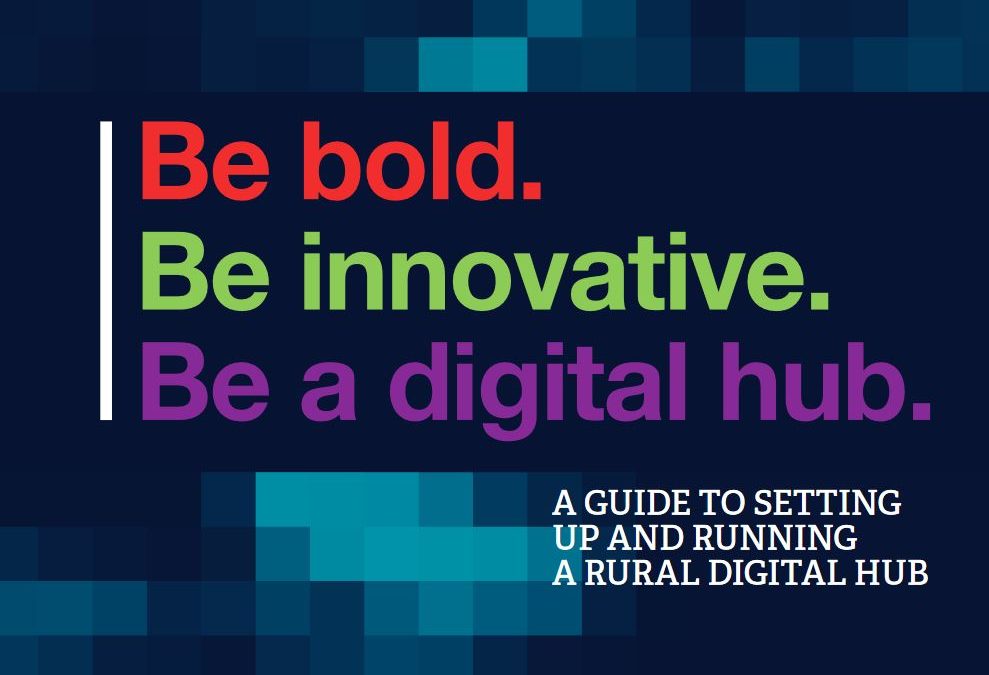A team of leading economic development specialists have produced comprehensive new guidelines exposing the stark digital divide between urban and rural areas, in a bid to bridge the gap and encourage local authorities and business leaders to take action. The “Be Bold. Be Innovative. Be a Digital Hub” guide provides directions to setting up and running high-tech digital hubs in remote and rural locations, which might otherwise suffer from a lack of digital infrastructure, such as superfast broadband, and a shortage of technical skills.
The guide details the logistics and benefits of establishing a new hub. Digital hubs are physical spaces with access to superfast broadband, alongside other community and business focussed services – from providing meeting and networking space to offering opportunities to test new technologies.
Liz Price, Senior Research Fellow at the Lincoln International Business School, said: “Rural areas have specific challenges, such as smaller populations and limited public service provision, that impact how people live and work. Digital technology can respond to these challenges by providing rural residents with new ways of accessing services and creating new opportunities for rural businesses.“
“The ability of rural areas to respond to these opportunities continues to be hampered by relatively poor internet accessibility. The digital divide is still very real for rural areas where, according to OFCOM, 12% of premises cannot get a decent broadband service. Alongside this, the development of digital skills is critical to being able to fully exploit digital technology.”
This work has major significance in Lincolnshire, where only two per cent of people are employed in digital jobs in both the digital and non-digital sectors, which is half the national average. The team found that rural businesses have previously identified difficulty in accessing appropriate external IT training, trouble recruiting people with appropriate digital skills, and the existing workforce often lacks sufficient digital skills.
They also conducted an in-depth study of several existing digital hubs located across Europe and analysed the benefits they bring to their local communities.
Dr Fiona Ashmore, Research Fellow at the Lincoln International Business School, led the production of the digital hub guide. She said: “The 4th Industrial Revolution offers opportunities to transform the way people live and work in rural areas, but without the requisite internet connectivity or digital skills, there is a continued risk of rural areas being left further behind. Our research has shown that digital hubs are potential drivers for positive change and can be a starting point to overcome these digital divide challenges. That is why we’re trying to encourage more local authorities to invest in these hubs, and more residents and businesses to access their facilities.”
“Digital hubs really could help people from rural areas to feel much less isolated and better connected. They can transform the way rural communities live and work.”
The guide outlines the different formats that a digital hub can take, including a Public Internet Access Point, an Incubator/Co-working Space, an Advice, Training and Support Space, and a Sector-specific Space.
It also includes examples of existing hubs that are already supporting businesses and residents in rural areas. These include the successful Impact Hub in Inverness – a flexible working space which brings together lone workers, combats social isolation and encourages social entrepreneurship – and the Lincolnshire Technology Hubs.
The Lincolnshire Technology Hubs are three inter-connected but distinct hubs, co-located in business or university settings. All three target businesses in Greater Lincolnshire and they provide free access to technical support and equipment for prototyping, fabrication and movement analytics.
The guidelines are produced by the Lincoln team working together with CORA (‘COnnecting Remote Areas with digital infrastructure and services’) partners – an international project consortium of 18 organisations from seven European countries bordering the North Sea.

